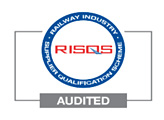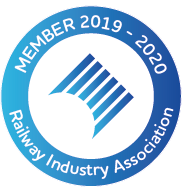EGIP – Waverley Station Option Selection Report
PROJECT: EGIP – Waverley Station Option Selection Report
CLIENT: Jacobs
DATE: December 2018
Waverley station is a main line terminus in Edinburgh and the second busiest rail station in Scotland. A revised Single Option Selection was required as a consequence of the revised track and platform layout proposed as part of the Edinburgh to Glasgow Improvement Programme (EGIP). Two options for platform extensions were presented in our submission to Jacobs.
The study required integrating new OLE design with the existing OLE system to cater for longer trains within the station. The options presented were an extension of platform 12 to cater for 8-car 23.7m long vehicles (with specific focus on the new escalator position and impact of the platform extension) and extensions of platforms 5 & 6 to cater for 260m long trains (To include sufficient clearance to buffer stop and starting signals with the ability to split/ join 2No 130m long trains). The second option was to create a through platform by merging platforms 6 and 12 (with specific focus on the issues of gaining a compliant OLE system under the footbridge).
Project Details
The following are some of the design features proposed in the OptionSelection Report to provide a compliant and cost effective design.
OPTION 1
• Network Rail’s reluctance to anchor to the footbridge (Overbridge 3) resulting in a new structure on which to anchor the OLE extension. Due to limiting constraints, such as pedestrian access, goal post anchor structures were proposed.
• Addition of a new switch to enable isolation of Platform 5 and 6 extensions.
• The use of existing architecture to support new OLE used in the platform extensions, reducing the amount of Civils works needed, the i.e. use of existing roof support columns, building walls and taxi ramp.
• The existing span lengths from platforms 7/11, 9 and 10 were implemented for the OLE above platforms 5,6 and 12, maximising structure efficiency but also reducing the impact on signal sighting and improving aesthetics.
• Implementation of pedestrian screening over a retaining wall for the taxi rank, as the height of the wall descended to concourse level, due to possible public interaction with live OLE.
• With the removal of the lineside BT building on platform 12 our design proposed using existing roof support columns within the building as an anchor structure for new and existing headspans.
• A new twin cantilever structure required to register the OLE above the toes of the points at the turnout of platforms 5 and 6.
• Structure repositioning was required due to the track and platform extensions. Due to the new position of the OLE structure it would be fenced off from the public and skewed half a metre due to the new platform layout.
Option 2
Within this option the design was based on Option 1 but incorporated a through platform by merging platforms 6 and 12. The critical element to this design was a usable solution for electrifying under the existing footbridge, which would be dependent on the soffit height;
• If the soffit height was lower than 4.350m then no electrification would be possible and therefore the bridge would need to be either jacked up or the track would need to be lowered.
• With the minimum attainable soffit height a conductor beam system could be used, which would need the anchors mentioned in Option 1 to support the tramway/conductor beam transition.
WENTWORTH HOUSE RAIL SYSTEMS
Wentworth House Rail Systems is a leading provider of Overhead Line (OLE) Design and Consultancy services.


Office Location
Unit 2, Wellfield Business Park,
Preston Brook,
Runcorn,
WA7 3AZ




